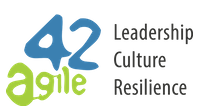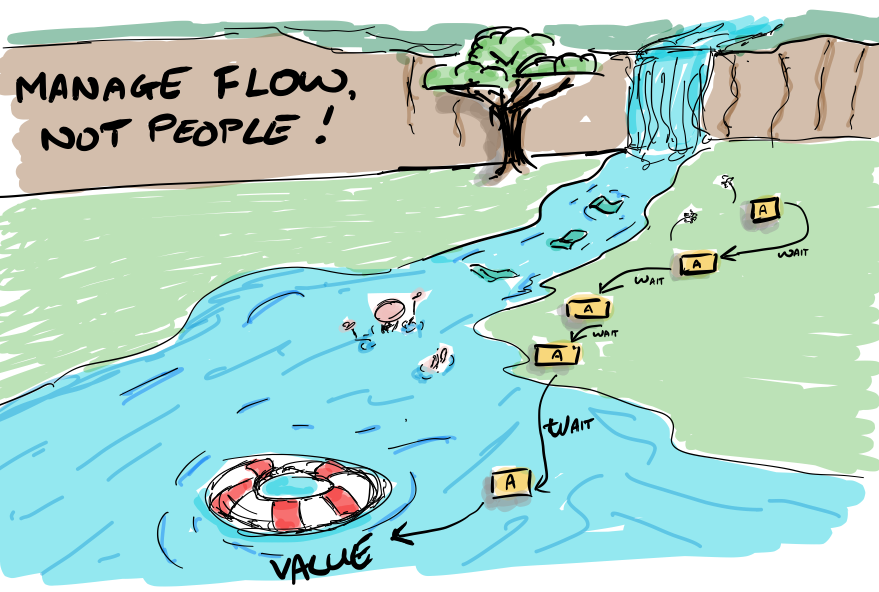Double Down on Scrum Fundamentals: Help Remote Teams Thrive
Moving to remote work is a huge challenge for many organizations. It can feel slower and harder than working in an office. So why is it that some organizations seem to actually run better remote?
Well, it turns out that working remotely is just exacerbating the challenges we all face. Those organizations that are thriving have learned to address those challenges, so working remotely isn’t as problematic for them.
The great news for teams practicing Scrum is that you already have the building blocks in place. Now, doubling down on those Scrum Fundamentals can actually turn this difficult time into a turning point on your teams.
Let’s explore how Scrum helps alleviate the pain of the three most common challenges: Communications, Alignment, and Adapting and Pivoting.
Challenge #1: Communications
Communication is a key part of getting work done. However, remote work makes communication slower and more difficult. This, in turn, slows down the ability for work to get completed.
Scrum Fundamental
A Scrum team is small and cross-functional, containing all of the skills and knowledge needed to complete valuable work. The underlying reason for this is communications channels. The number of communication channels required to get work done increases exponentially as the team grows. We can see how quickly complexity grows in the diagram below.

To calculate the exponential growth in lines of communication use the formula: c=n (n-1)2
A properly-formed Scrum Team addresses this problem in 3 ways.
First, the small number of team members allows for fewer communication channels. Second, the cross-functional nature means the team rarely has to pull more people into the circle to complete work. Thirdly, the dedicated nature of the team means that there is as little wait time as possible, making those channels more efficient.
Remote Teams
Simpler communications channels means that Scrum teams have more options to reduce the complexities of remote work. It is much simpler to schedule synchronous communications like Zoom conversations. It is also far easier to pay attention to Slack channels with just a few people in them without getting distracted by constant interruptions.
Key Takeaways
- In remote-work situations, every communication is a bit harder and a bit less efficient, even if your team is experienced at working remotely.
- Look for ways to move to more synchronous communication when possible
- Reduce matrixing and cross-team dependencies to lower the total number of communication channels to complete work.
Challenge #2: Alignment
People are busy, but moving in many different directions. Many organizations rely on managers, directors, and team leads to keep teams aligned. This can work well, but one of the most common complaints we hear from these leaders when teams move to remote work is that they lose connectivity and that makes it far more difficult to provide that coordination.
Scrum Fundamental
Scrum provides just enough structure to allow a team to run without external coordination. The Sprint Goal sets a direction for the sprint. The Sprint Goal should not be to do work, but to achieve an outcome. This lets all team members make fast implementation decisions in the moment by asking themselves: “Does this action take me closer or further away from the Sprint Goal.”
The items in the Sprint Backlog should describe product capabilities that will help the team reach the Sprint Goal. Backlog items like “A logged in user will be able to submit a help request to technical support through their portal” are implementation agnostic. This gives the team the flexibility it needs to pivot if they discover that their expected implementation isn’t feasible without getting approvals or coordination from outside of the team.
Key Takeaways
- Create Sprint Goals that describe valuable business outcomes the team can use as a North Star for the Sprint.
- Team members should make decisions asking themselves if it takes them closer or further away from the Sprint Goal.
- Backlog items should be flexible enough to allow the team to coordinate the implementation internally.
- To learn more about creating great Sprint Goals, check out Mark Levinson’s Article on Agile Matters.
Challenge #3: Adapting and Pivoting
As the saying goes: large ships turn slowly. The same is true for the large, important projects and initiatives that many organizations work on. As we move to remote working and the world around us changes more and more rapidly, the inability to adapt becomes a significant challenge for companies.
Scrum Fundamental
Scrum asks teams to create a potentially shippable product increment every sprint. This means that an increment of the product is built, tested, integrated, and ready to deliver if it is deemed valuable and complete enough to ship. Traditionally, the “value” of the increment gets all of the attention, but the “complete” side of the increment is just as important. When the increment is complete, it is easy to pivot to new work or features without the challenges and waste of leaving work partly done.
Keep in mind that what applies to the team also applies at the program and portfolio level. Most organizations optimize their projects for starting many all at once. This means that many large efforts stretch over months or even years, making it difficult to pivot when necessary. Rallying teams around small increments that complete in a sprint or two lets the whole company pivot quickly.
Key Takeaways
- As much as possible, focus on bringing the sprint’s increment to a full close to be able to make large pivots each sprint if needed.
- Apply the same principle to your program and portfolio. It doesn’t help if your teams pivot quickly but the business doesn’t.
Getting Started
If all that sounds like it’s very far away from where your teams are today – don’t panic! Taking even a small step toward any of these items will help your team and your organization. If you make even one improvement per Sprint, imagine where you’ll be in a year.
And remember, if you’re a Scrum Master, a Coach, or an Organizational Leader, it’s not all on you to fix things for the team. Another Scrum Fundamental is that the team can lead the charge in their own improvements too.
As an old boss once told me, “You’re doing great! Do better next time!”
Be sure to watch the webinar recording of this topic, available here and on YouTube.









